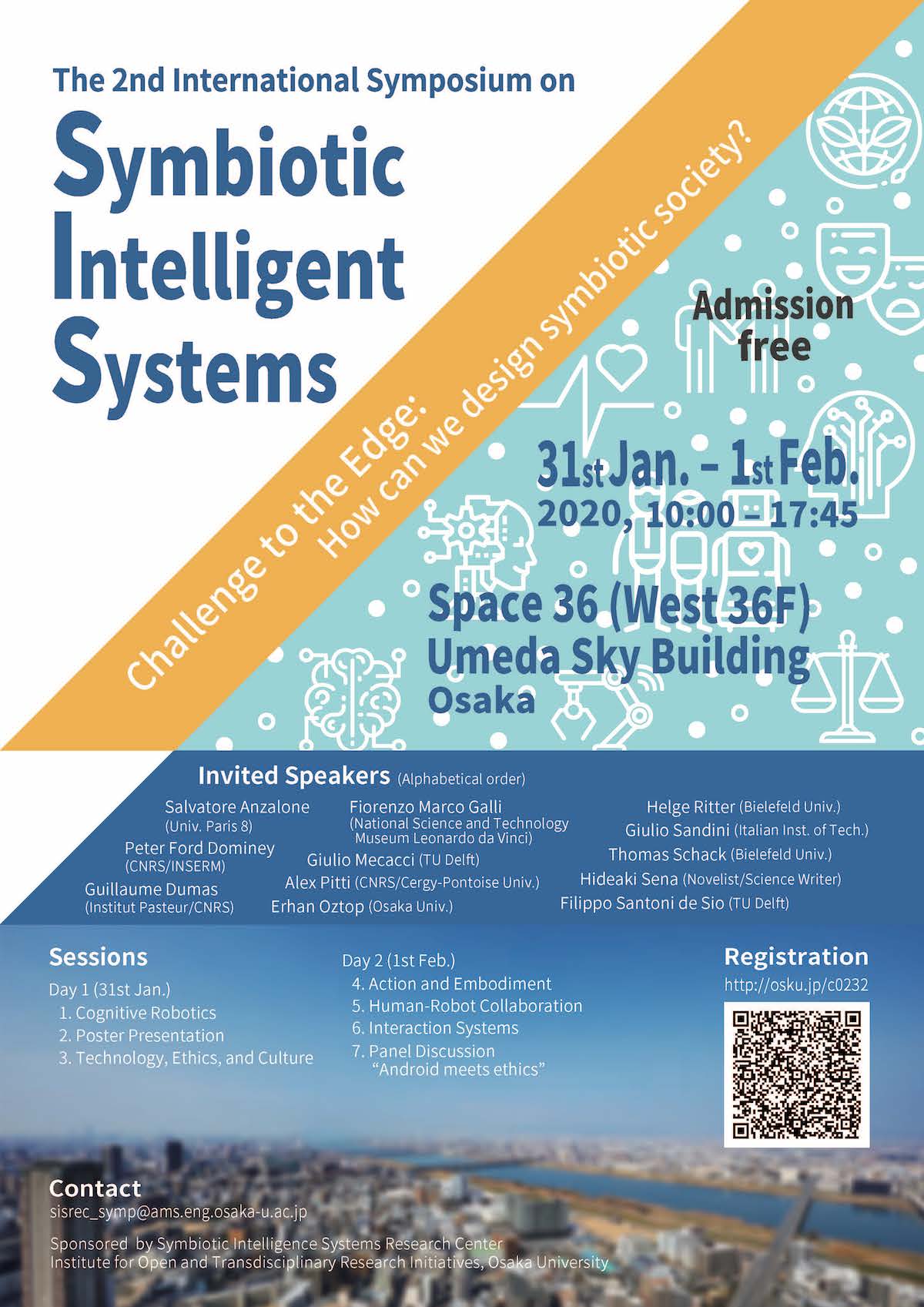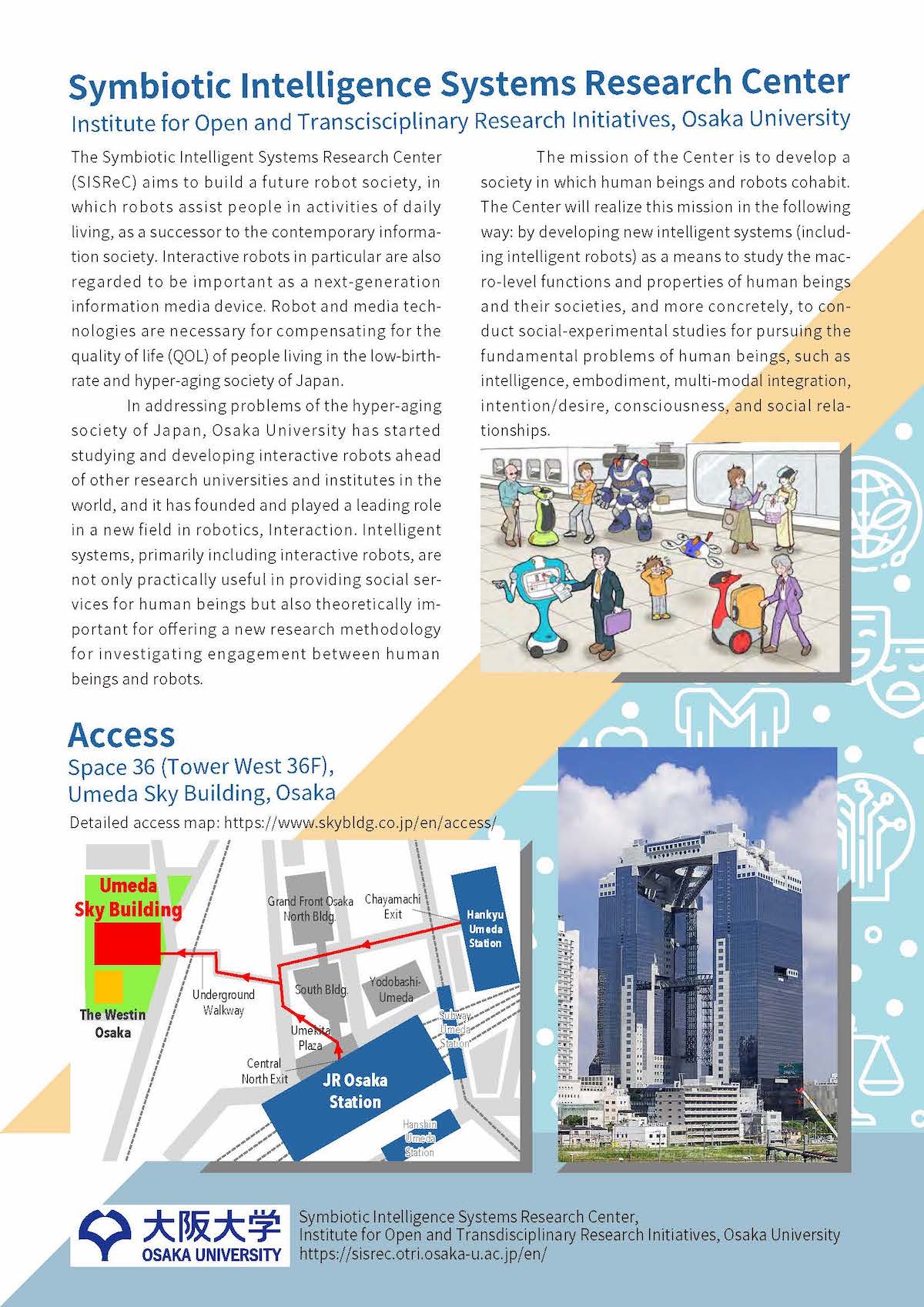The 2nd International Symposium on Symbiotic Intelligent Systems: "Challenge to the Edge: How can we design symbiotic society?"
The 2nd International Symposium on Symbiotic Intelligent Systems finished with a great success. Many thanks to all participants.
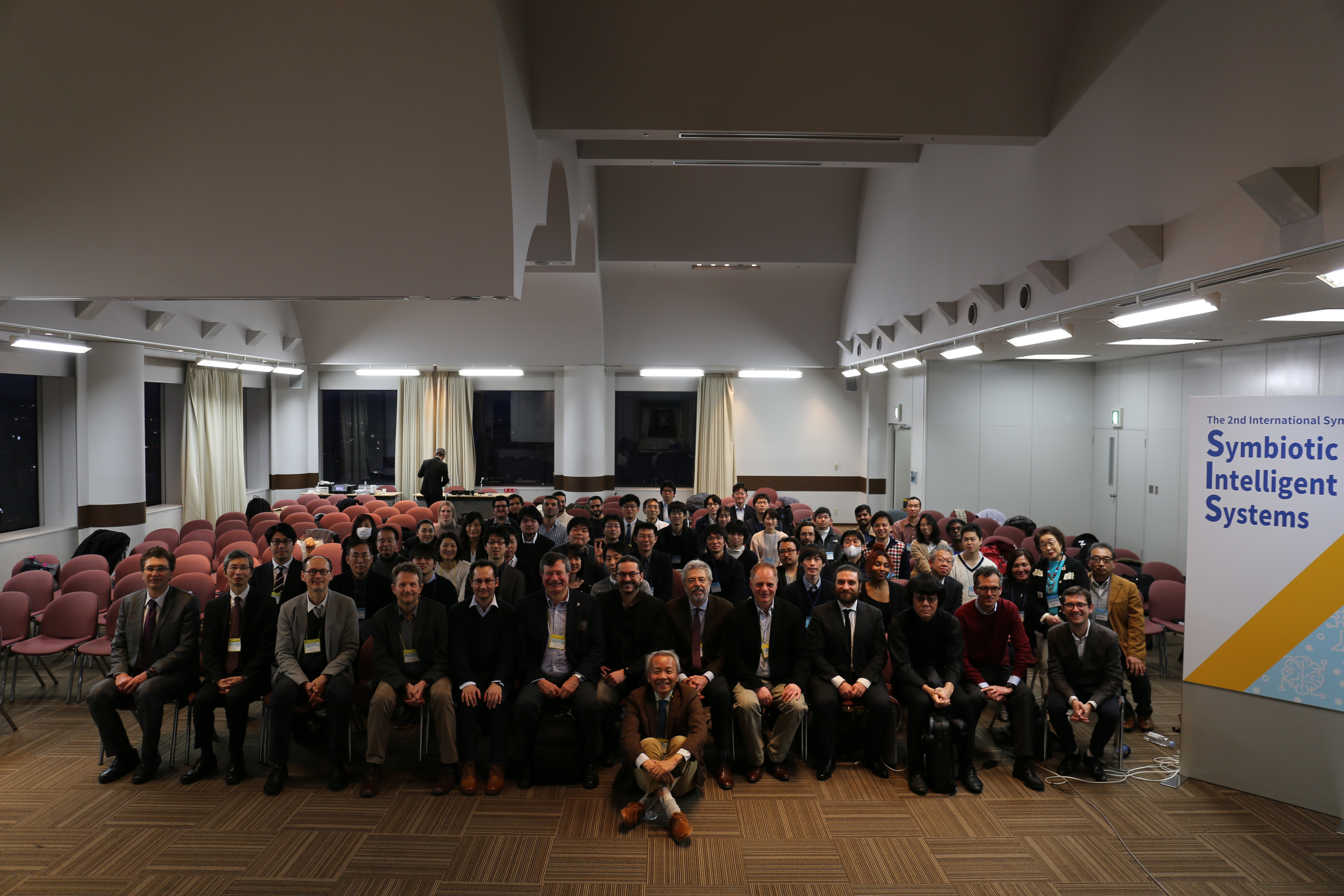
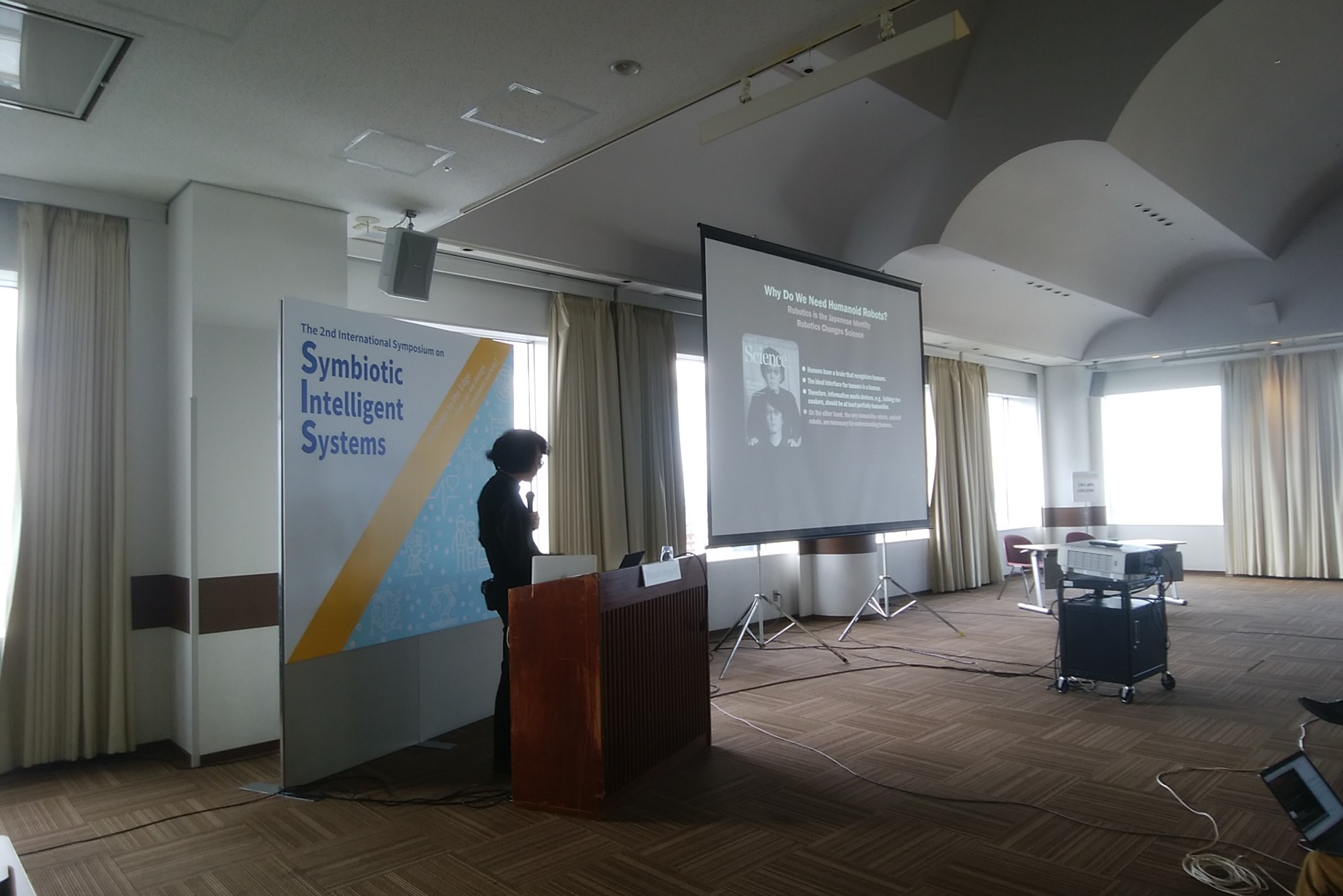
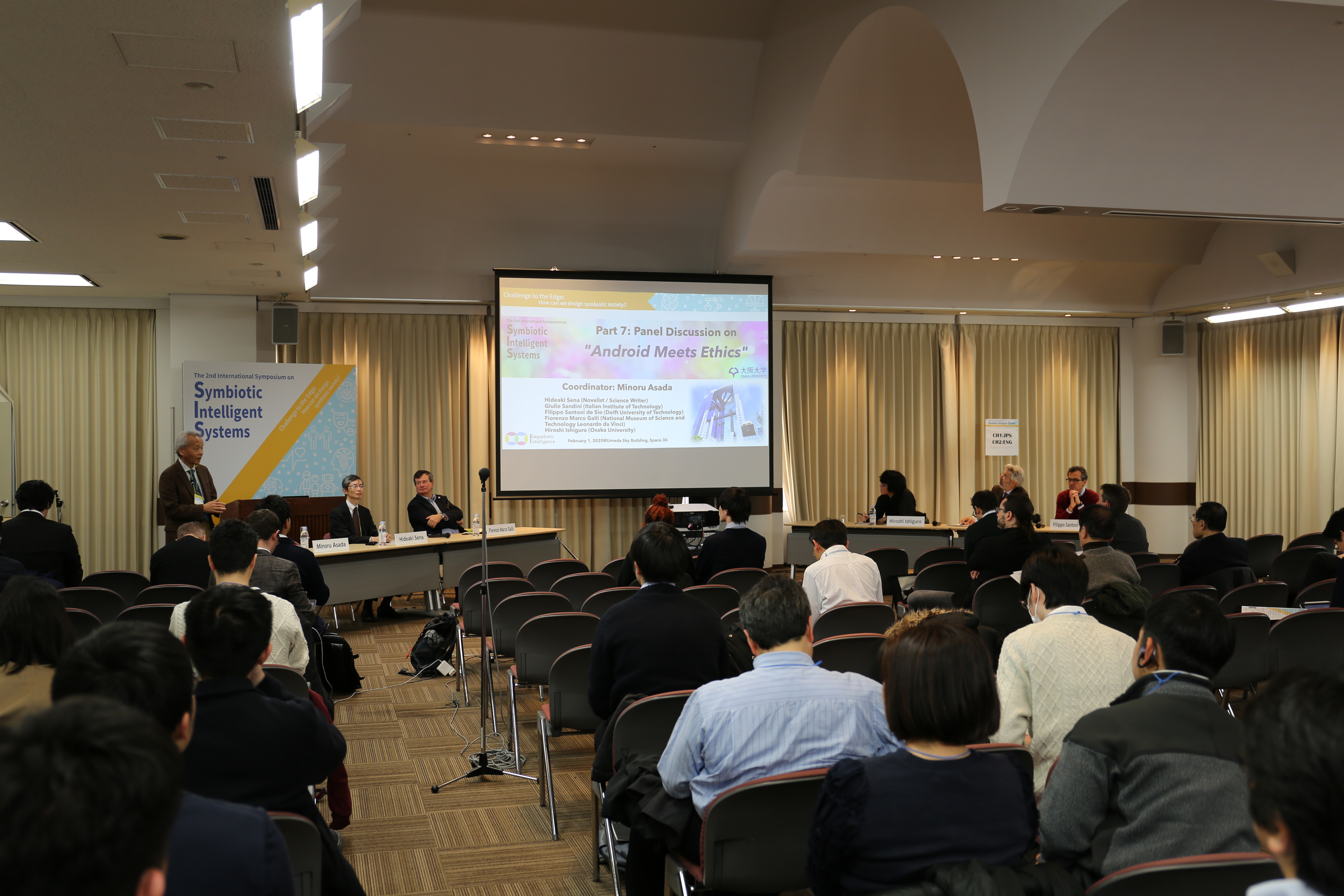
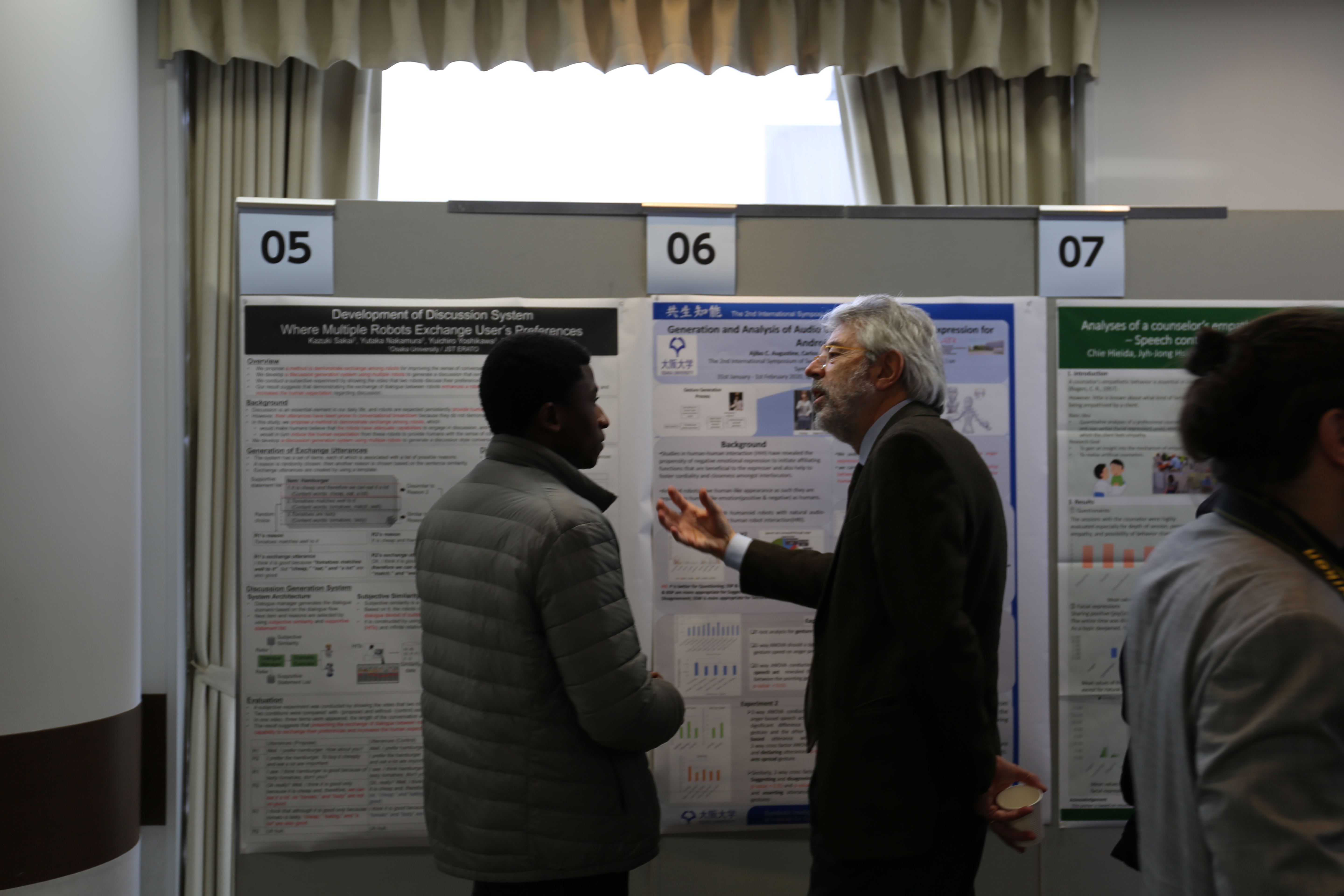
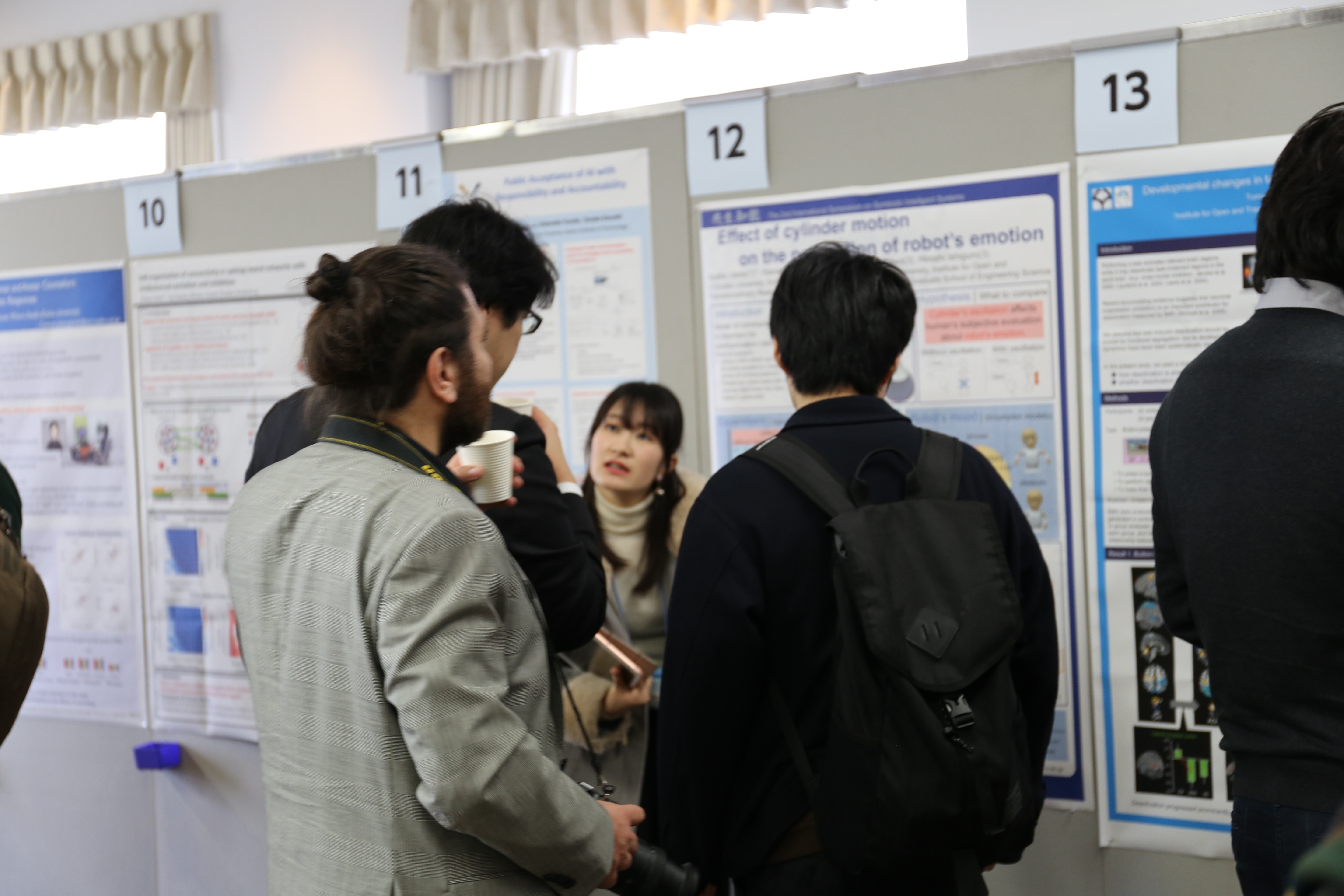
Overview
| Date | January 31, 2020 – February 1, 2020 |
| Place | Umeda Sky Building, Space 36 (access) |
| Program | See below. * Click here to download presentation abstracts. |
| Fee | No fee except banquet |
| Registration | Click here * We do not accept any more applications for banquet because we have already received too many applications. |
| Sponsor | Symbiotic Intelligent Systems Research Center, Institute for Open and Transdisciplinary Research Initiatives, Osaka University |
| Cooperation | The Robotics Society of Japan |
Program (abstracts)
Day 1 (Jan 31)
|
Opening Remarks |
|
| 10:00 – 10:10 |
Takao Onoye (Osaka University) |
| 10:10 – 10:25 |
Hiroshi Ishiguro (Osaka University) |
|
Session 1 “Cognitive Robotics” |
|
| 10:25 – 11:10 |
Giulio Sandini (Italian Institute of Technology) |
| 11:10 – 11:55 |
Alex Pitti (CNRS / University of Cergy-Pontoise) |
| 11:55 – 13:00 |
Lunch Break |
|
Session 2 “Poster Presentation” |
|
| 13:00 – 14:30 |
Poster Session & Coffee Break |
|
Session 3 “Technology, Ethics, and Culture” |
|
| 14:30 – 15:15 |
Minoru Asada (Osaka University) ‘Artificial Moral Agents with Artificial Pain’ |
| 15:15 – 16:00 |
Filippo Santoni de Sio (Delft University of Technology) |
| 16:00 – 16:15 |
Coffee Break |
| 16:15 – 17:00 |
Giulio Mecacci (Delft University of Technology) |
| 17:00 – 17:45 |
Fiorenzo Marco Galli (National Museum of Science and Technology Leonardo da Vinci) |
| 18:00 – 20:00 |
Banquet |
Day 2 (Feb 1)
|
Session 4 “Action and Embodiment” |
|
| 10:00 – 10:45 |
Helge Ritter (Bielefeld University) |
| 10:45 – 11:30 |
Thomas Schack (Bielefeld University) |
| 11:30 – 13:00 |
Lunch Break |
|
Session 5 “Human-Robot Collaboration” |
|
| 13:00 – 13:45 |
Erhan Oztop (Osaka University) |
| 13:45 – 14:30 |
Salvatore Anzalone (Université Paris 8) |
| 14:30 – 14:45 |
Coffee Break |
|
Session 6 “Interaction Systems” |
|
| 14:45 – 15:30 |
Peter Ford Dominey (CNRS/INSERM) |
| 15:30 – 16:15 |
Guillaume Dumas (Institut Pasteur/CNRS) |
| 16:15 – 16:30 |
Coffee Break |
|
Session 7 “Panel Discussion: Android Meets Ethics” |
|
| 16:30 – 17:15 |
|
|
Closing Remarks |
|
| 17:15 – 17:30 |
Minoru Asada (Osaka University) |
- Anja Philippsen∗, and Yukie Nagai∗
‘Prediction ability as a prerequisite of representational drawing behavior’
∗ The University of Tokyo - Shi Jiaqi∗
‘Preliminary investigation on skeletal movement based emotion recognition’
∗ Osaka University - Kentaro Suzuki∗, Jihoon Park∗, Yuji Kawai∗, and Minoru Asada∗
‘The analysis of synchronisation between two small-world oscillator networks: Towards understanding inter-brain synchronisation‘
∗ Osaka University - Changzeng Fu∗, Thilina Dissanayake∗, Kazufumi Hosoda∗, Takuya Maekawa∗, and Hiroshi Ishiguro∗
‘Similarity of speech emotion in different languages revealed by a neural network with attention’
∗ Osaka University - Kazuki Sakai∗, Yutaka Nakamura∗, Yuichiro Yoshikawa∗, and Hiroshi Ishiguro∗
‘Development of discussion system where multiple robots exchange user’s preferences’
∗ Osaka University - Ajibo C. Augustine∗, Carlos T. Ishi†, and Hiroshi Ishiguro∗†
‘Generation and analysis of audio visual anger emotional expression for android robot’
∗ Osaka University / † Advanced Telecommunications Research Institute International (ATR) - Chie Hieida∗, Jyh-Jong Hsieh∗, Yuji Kawai∗, and Minoru Asada∗
‘Analyses of a counselor’s empathic behavior toward a client: Speech contents and facial expressions’
∗ Osaka University - Yuya Onishi∗, Hiroshi Okada∗, Gin Ichiguchi∗, and Hideyuki Nakanishi∗
‘Creating a virtual agent’s reality with robotic hand holding’
∗ Osaka University - Jyh-Jong Hsieh∗, Chie Hieida∗, Yuji Kawai∗, and Minoru Asada∗
‘Comparison between human and avatar counselors with or without empathetic responses’
∗ Osaka University - Jihoon Park∗, Yuji Kawai∗, and Minoru Asada∗
‘Self-organization of connectivity in spiking neural networks with (im)balanced excitation and inhibition‘
∗ Osaka University - Natsuki Oka∗, Yusuke Hatanaka∗, and Kazuaki Tanaka∗
‘Public acceptance of AI with responsibility and accountability’
∗ Kyoto Institute of Technology - Ayaka Ueda∗, Hamed Mahzoon∗, Yuichiro Yoshikawa∗, and Hiroshi Ishiguro∗
‘Effect of cylinder motion on the perception of robot’s emotion’
∗ Osaka University - Tomoyo Morita∗, Mioru Asada∗, and Eiichi Naito†
‘Developmental changes in task-induced brain deactivation revealed by a motor task’
∗ Osaka University / † Center for Information and Neural Networks(CiNet), National Institute of Information and Communications Technology (NICT) - Hirono Ohashi∗, Naoki Yamada∗, Natsuki Minakawa∗, Ryota Yanagisawa∗, Shunsuke Shigaki∗, Masahiro Shimizu∗, and Koh Hosoda∗
‘Towards 4D printing technology for muscle cells’
∗ Osaka University - Allam Shehata∗, Yuta Hayashi∗, Yasushi Makihara∗, Daigo Muramatsu∗, and Yasushi Yagi∗
‘Does my gait look nice? Human perception-based gait relative attributes estimation by dense trajectory analysis’
∗ Osaka University - Taku Matsuura∗, Kazuhiro Sakashita∗, Andrey Grushnikov∗, Fumio Okura∗, Ikuhisa Mitsugami∗, and Yasushi Yagi∗
‘Statistical analysis of dual-task gait characteristics for cognitive score estimation ‘
∗ Osaka University - Shunsuke Shigaki∗, Daisuke Kurabayashi†, Masahiro Shimizu∗, and Koh Hosoda∗
‘Construction of sensory intervention system for insect’
∗ Osaka University / † Tokyo Institute of Technology - Shiqi Yu∗, Yoshihiro Nakata∗, and Hiroshi Ishiguro∗
‘Adopting life behaviors of humans on an android with a ROS-based software package “silva”‘
∗ Osaka University - Hideyuki Takahashi∗, Midori Ban∗, Naoko Omi∗†, Hisashi Ishihara∗, Yutaka Nakamura∗, Yuichiro Yoshikawa∗, and Hiroshi Ishiguro∗
‘Interactive room environment with anthropomorphic adaptability’
∗ Osaka University / † DAIKIN INDUSTRIES - Xiqian Zheng∗†, Masahiro Shiomi†, Takashi Minato†, and Hiroshi Ishiguro∗†
‘What kinds of robot’s touch will match expressed emotions’
∗ Osaka University / † Advanced Telecommunications Research Institute International (ATR) - Linkun Gao∗, Shunsuke Shigaki∗, and Koh Hosoda∗
‘A musculoskeletal bipedal robot based on SLIP model’
∗ Osaka University - Momoko Okazaki∗, Hamed Mahzoon∗, Yuichiro Yoshikawa∗, and Hiroshi Ishiguro∗
‘Influence of visualization of robot’s verbal information on human’s subjective evaluation’
∗ Osaka University - Soheil Keshmiri∗
‘A novel conditional entropy approach to modeling the PFC activation in response to difficulty of stories’
∗ Advanced Telecommunications Research Institute International (ATR) - Ryu Takahashi∗, Linkun Gao∗, and Koh Hosoda∗
‘Development of a feedback system for musculoskeletal robots inspired by muscle reflexes’
∗ Osaka University - Kazuki Miyazawa∗, Takato Horii∗, Tatsuya Aoki∗†, and Takayuki Nagai∗†
‘Integration of multiple probabilistic generative models for robot learning’
∗ Osaka University / † The University of Electro-Communications - Tatsuya Aoki∗†, Takato Horii†, and Takayuki Nagai∗†
‘Towards continuous robot learning in a real environment: Probabilistic generative model based on nonparametric Bayes and auto-encoding variational inference’
∗ The University of Electro-Communications / † Osaka University
Request for Poster Presenters
- The size of the poster panel is 190 cm height × 90 cm width.
- After the symposium, send your poster (PDF file) to sisrec_symp_at_ams.eng.osaka-u.ac.jp (please change _at_ to @).
Contact
- For questions regarding this symposium, please contact the organizing committee at sisrec_symp_at_ams.eng.osaka-u.ac.jp (please change _at_ to @).
